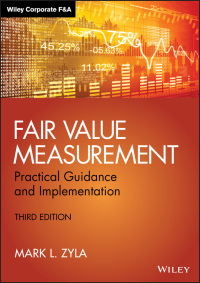Question
Preparing the Statement of Cash Flows Balance sheet information for Beckwith Products Company is presented below. Jan. 1 Dec. 31 Assets: Cash $25,000 $36,950 Accounts
Preparing the Statement of Cash Flows
Balance sheet information for Beckwith Products Company is presented below.
| Jan. 1 | Dec. 31 | ||
| Assets: | |||
| Cash | $25,000 | $36,950 | |
| Accounts receivable | 78,000 | 75,100 | |
| Inventory | 36,000 | 45,300 | |
| Property, plant, and equipment | 153,000 | 256,400 | |
| Accumulated depreciation | 20,000 | 38,650 | |
| Total assets | $272,000 | $375,100 | |
| Liabilities and Equity: | |||
| Accounts payable | $11,000 | $13,100 | |
| Interest payable | 8,000 | 11,500 | |
| Wages payable | 9,000 | 8,100 | |
| Notes payable | 90,000 | 105,000 | |
| Common stock | 50,000 | 100,000 | |
| Retained earnings | 104,000 | 137,400 | |
| Total liabilities and equity | $272,000 | $375,100 |
Additional Information:
- Net income for the year was $58,400.
- Cash dividends of $25,000 were declared and paid during the year.
- During the year, Beckwith issued $50,000 of notes payable and repaid $35,000 principal relating to notes payable.
- Common stock was issued for $50,000 cash.
- Depreciation expense was $18,650, and there were no disposals of equipment.
Required:
1. Prepare a statement of cash flows (indirect method) for Beckwith Products. Use a minus sign to indicate any decreases in cash or cash outflows.
| Cash flows from operating activities: | ||
| Cash received from stock issueDecrease in accounts payableNet incomeNet increase (decrease) in cashRepayment of long-term liabilitiesNet income | ||
| Adjustments to reconcile net income to net cash flow from operating activities: | ||
| Cash received from issuance of notesCash received from stock issue Depreciation expense Net increase (decrease) in cash Repayment of long-term liabilitiesDepreciation expense | ||
| Cash received from issuance of notesCash received from stock issue Decrease in accounts receivable Net increase (decrease) in cash Repayment of long-term liabilities Decrease in accounts receivable | ||
| Cash received from stock issue Increase in inventory Net income Payment of dividends Repayment of long-term liabilities Increase in inventory | ||
| Accumulated depreciationDecrease in interest payableIncrease in accounts payable Payment of dividends Repayment of long-term liabilities Increase in accounts payable | ||
| Cash received from stock issue Increase in interest payable Payment of dividends Receipts of dividends Repayment of long-term liabilities Increase in interest payable | ||
| Cash received from issuance of notesCash received from stock issue Decrease in wages payable Payment of dividends Repayment of long-term liabilities Decrease in wages payable | ||
| Net cash provided by financing activities Net cash provided by investing activities Net cash provided by operating activities Net cash used for investing activities Net cash used for operating activities Net cash provided by operating activities | ||
| Cash flows from investing activities: | ||
| Decrease in wages payableDepreciation expense Equipment purchase Increase in interest payableIncrease in inventory Equipment purchase | ||
| Net cash provided by financing activities Net cash provided by investing activities Net cash provided by operating activities Net cash used for investing activities Net cash used for operating activities Net cash used for investing activities | ||
| Cash flows from financing activities: | ||
| Cash received from issuance of notes decrease in wages payableDepreciation expense increase in accounts payable increase in interest payable cash received from issuance of notes | ||
| Decrease in accounts receivable decrease in wages payableIncrease in accounts payable increase in interest payableRepayment of long-term liabilities repayment of long-term liabilities | ||
| Cash received from stock issueDepreciation expenseIncrease in accounts payableIncrease in interest payableIncrease in inventoryCash received from stock issue | ||
| Accumulated depreciationDecrease in accounts receivableDepreciation expenseIncrease in accounts payablePayment of dividendsPayment of dividends | ||
| Net cash provided by financing activities | ||
| Decrease in accounts receivable decreased in wages payableDepreciation expense increase in accounts payableNet increase (decrease) in cash net increase (decrease) in cash | ||
| Cash, January 1 | ||
| Cash, Dec. 31 |
Compute the following cash-based performance measures:
- Free cash flow
- Cash flow adequacy (Note: Assume that the average amount of debt maturing over the next 5 years is $85,000.)
Round ratio to two decimal places. Enter negative values as negative numbers.
| Free cash flow | |
| Adequacy ratio |
Note:
When filling the choices in the statement, please fill each name according to the choices.
Step by Step Solution
There are 3 Steps involved in it
Step: 1

Get Instant Access to Expert-Tailored Solutions
See step-by-step solutions with expert insights and AI powered tools for academic success
Step: 2

Step: 3

Ace Your Homework with AI
Get the answers you need in no time with our AI-driven, step-by-step assistance
Get Started


